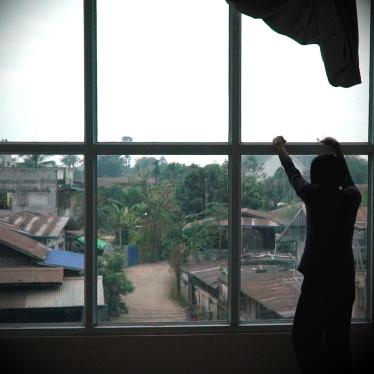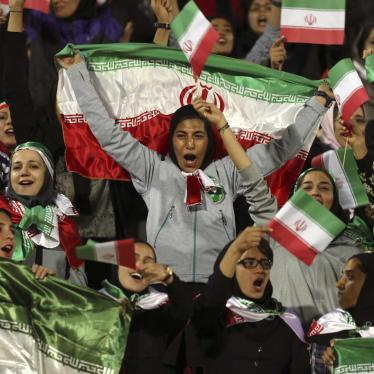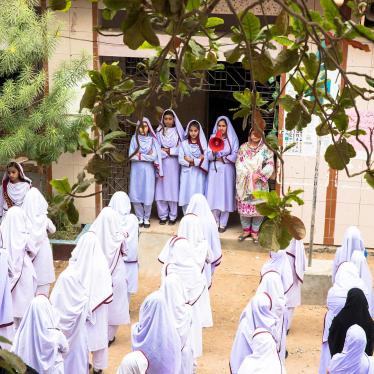Nang Seng Ja was just 19 and living in Myanmar’s northern Kachin State when her aunt invited her on a trip to see her three cousins who live in China. About a month into the visit, Nang Seng Ja fainted. She awakened in a strange house surrounded by a Chinese man and his family. “I heard from them that I was trafficked,” she told Human Rights Watch.
Nang Seng Ja, whose name I’ve changed for her protection, fled to a nearby police station, and begged for help. “The police then took 5,000 yuan [$800] from the family,” she said. “Then they sent me back to the family.”
They locked her in a room where the man raped her repeatedly. They forced her to take what they said were fertility drugs. “The family’s mother and father told me, ‘We bought you. You must stay here,’” she said. After 14 months, one of her cousins, angry that she received a smaller share of the “bride” money, told Nang Seng Ja’s parents where she was. They paid another trafficking survivor half of the family’s property to recover her.
Each year, traffickers through deceit or force, transport hundreds of women and girls from northern Myanmar to China and sell them to Chinese families struggling to find brides for their sons due to the country’s gender imbalance.
Myanmar’s internal armed conflict in the North has been ongoing since achieving its independence in 1948, but dramatically escalated in 2011 when the government ended a 17-year ceasefire. More than 100,000 people, predominantly ethnic Kachins, have been displaced. Many trafficking survivors said that they live desperate lives in displaced people’s camps, with little opportunity to earn a living. The Myanmar government blocks aid to the camps. Women and girls often become the sole breadwinners for their families, with their husbands and brothers away fighting.
Across the border in China, the percentage of women has fallen steadily since 1987. Researchers estimate that China has 30 to 40 million “missing women.” The imbalance is caused by a preference for boys, exacerbated by the “one-child policy” in place from 1979 to 2015, and China’s continuing restrictions on women’s reproductive rights.
Trafficking survivors usually said that trusted people—in some cases their own relatives–promised them work in China, then sold them for amounts ranging from $3,000 to $13,000. Survivors said buyers often seemed more interested in a baby than a bride. The women and girls were typically locked in a room and raped repeatedly. After giving birth they could sometimes escape, but usually only by leaving their children behind. Several women said they were so desperate to see their children that they returned to China to the families who had held them captive.
Law enforcement officials on both sides of the border make little effort to stem trafficking and, as Nang Seng Ja’s story illustrates, are sometimes complicit in the business. Families of trafficked women described begging the Myanmar police for help repeatedly and being turned away. The families—and experts—described police demanding bribes to act. Police operating as part of the opposition force, the Kachin Independence Organization (KIO), were no better.
Women who escaped and made it to the Chinese police were often jailed and deported, while their traffickers and buyers remained free. There is little effective coordination between police in Myanmar and in China, and even the most essential tools to facilitate such cooperation—interpreters, for example—are not in place.
Back in Myanmar, survivors have little access to services and grapple with stigma as they try to rebuild their lives. The Myanmar government provides a few services, but these are narrow in scope and miss most of those who need them. A number of civil society groups help survivors, push for justice, and work—with or without law enforcement help—to recover victims, but they have few resources.
All three police forces in the region should do more to prevent trafficking, recover and assist victims, and pursue both the traffickers and the buyers. International donors should fund nongovernmental groups’ efforts to help women and girls caught between Myanmar’s abuses against the Kachin and China’s war on reproductive rights.

![“Then the Chinese man said, ‘If you do not marry a man, the money we spent on you to bring you here…was 3000 Yuan and as you have already stayed here for 10 days, 4000 Yuan [US$637] is needed to give me back now. Right now, count the money to give me.](/sites/default/files/styles/embed_xxl/public/multimedia_images_2019/201903wrd_myanmar_photo5.jpg?itok=pHIMT_m9)

![“Because of war, we are afraid to stay in our village. So, we moved to an IDP [internally displaced person] camp…The Myanmar army came to attack our village using massive arms…I am the eldest one in my family, and my family has financial problems.](/sites/default/files/styles/square/public/multimedia_images_2019/201903wrd_myanmar_photo4_0.jpg?itok=0BHZSAZM)






